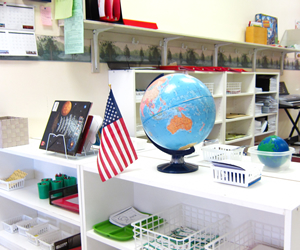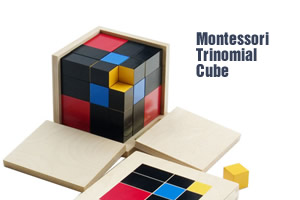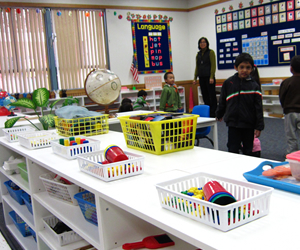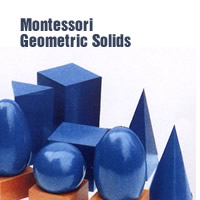MONTESSORI
METHOD
The
Montessori method treats each child as an individual.
Dr. Maria Montessori considered that children develop
at different speeds and should be given the opportunity
to develop at their own pace.
Montessori
developed a philosophy that says that each child
is unique and an individual and we need to accommodate
their needs.

Maria
Montessori was a Doctor. She was a trained physician
whose initial research involved observing children
in a psychiatric facility. Most people thought these
children were wild and uncontrollable. However further
research Dr. Montessori to discover cthat these
children were not wild, but that were merely starved
of wanting to work with materials. They need stimulation.
Her
conclusion in 1907 was that these wild unruly children
were bored, acting out because they lacked stimulation.
Giving them things to do to engage their mind not
only improved their behavior, but it also improved
their learning. With a little guidance and a healthy
stimulating environment, children could take control
of their own environment.
In
a Montessori classroom the teacher sets up the environment.
The teacher guides the child to the lesson. The
children then work at their own pace, maybe even
taking hours or days to complete a task. Emphasis
is placed not finishing something within a certain
amount of time, but the completion expectation.
That is the ability to complete the task however
long it takes.

Another
Montessori innovation is the sand paper letters
and numbers. Children first learn to trace letters
and also learn the sound of letters before they
actually learn the names of letter.
Many
of the Montessori materials are color coded to represent
certain meaning and values. For example this could
be used to represent mathematical quantities.

|

Dr.
Montessori believes that learning happens through
all 5 senses. She called this the "Absorbent
mind ". So she developed special material
to actively challenge young children through the
sense of touch, smell, sight, sound and taste.
This requires the child to physically experience
and manipulate objects in order to gain understanding.
But
Montessori has highly developed rules on how to
use these material. The starting point is the
3 period lesson. For example when the first box
of colors (a box contained three pairs of Red,
Yellow and Blue color tablets are introduced to
the child, the teacher does it in the following
manner.
First
Period - Open the box, lay out the tablets
and says " This is yellow, this red, this blue,
by point to each tablet.
2nd
Period - The teacher asks the child "
Show me blue, show me red, show me yellow "
3rd
Period - The teacher point to a color
and asks " what is this color?
Montessori
also teachers practical life skills such as dressing
themselves, washing hands, blowing their nose,
moving chairs, cleaning a table, setting a table,
preparing food and much more.
Children
are encouraged to work independently and chart
their course of development. This independence
helps children develop their inner compass or
what is called the " Self regulatory mechanism
". Children can freely choose an activity
that will interest them, but it must be from the
special material available within the classroom.
These materials are ready available in the open
and easily displayed so that children can readily
gain access to them. However they must completely
work through the lesson for each material.
In
a Montessori class, children of different ages
and ability are mixed together. Children like
to learn from one another and teach one another.
The younger children often like to be taught by
the older children and the older child likes to
guide and teach the younger child.
Unlike
other teaching system, the Montessori environment
is tightly controlled and well prepared. Individual
rugs define each Childs work area. Everything
is child sized including the furniture. Sizing
the furniture to fit the children was a Montessori
innovation. The classroom must look neat and tidy.
Each item has a place and should be put back exactly
where it was removed from. Children also learn
routine. That means there are set times for lunch,
play, nap time and work.
|
|
